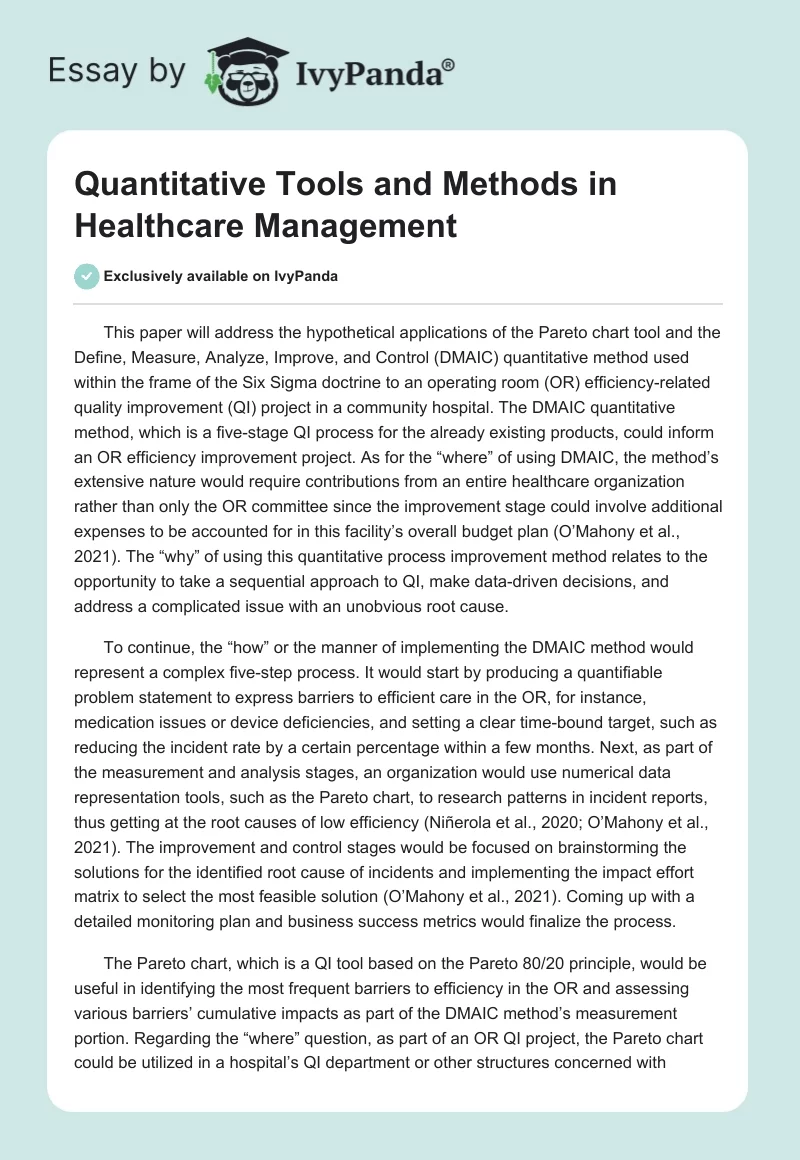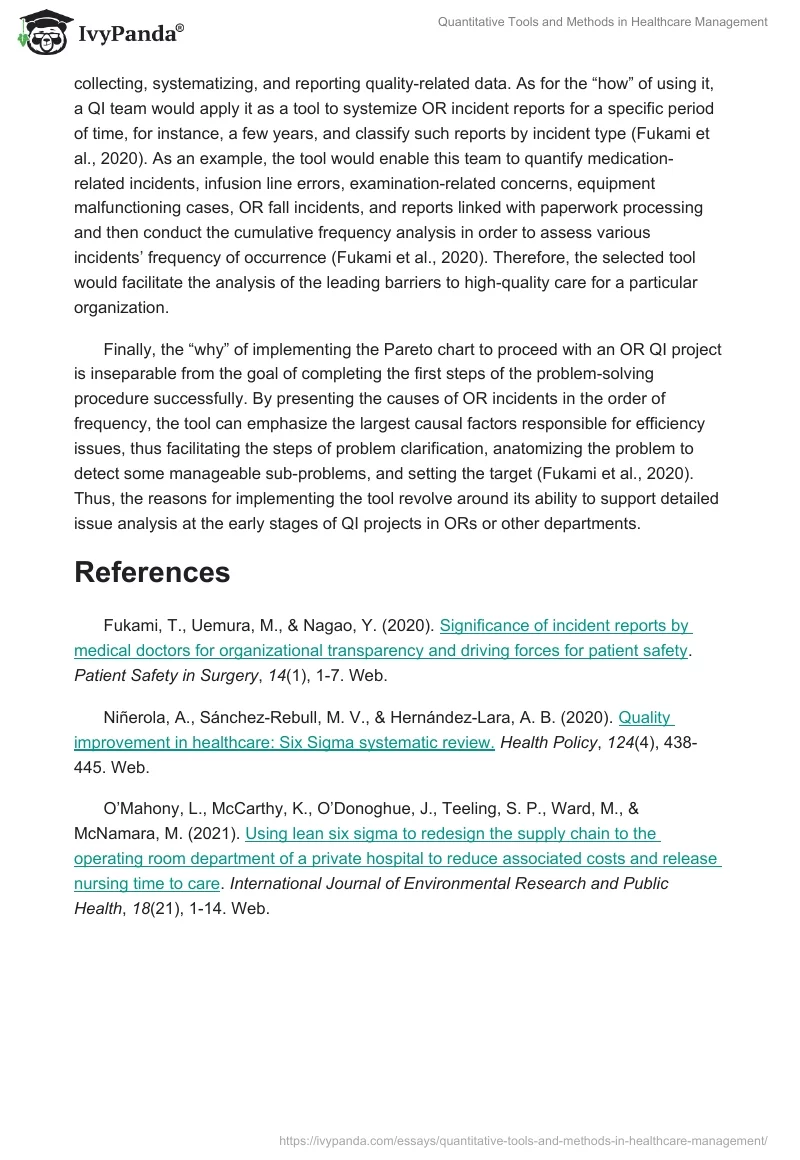This paper will address the hypothetical applications of the Pareto chart tool and the Define, Measure, Analyze, Improve, and Control (DMAIC) quantitative method used within the frame of the Six Sigma doctrine to an operating room (OR) efficiency-related quality improvement (QI) project in a community hospital. The DMAIC quantitative method, which is a five-stage QI process for the already existing products, could inform an OR efficiency improvement project. As for the “where” of using DMAIC, the method’s extensive nature would require contributions from an entire healthcare organization rather than only the OR committee since the improvement stage could involve additional expenses to be accounted for in this facility’s overall budget plan (O’Mahony et al., 2021). The “why” of using this quantitative process improvement method relates to the opportunity to take a sequential approach to QI, make data-driven decisions, and address a complicated issue with an unobvious root cause.
To continue, the “how” or the manner of implementing the DMAIC method would represent a complex five-step process. It would start by producing a quantifiable problem statement to express barriers to efficient care in the OR, for instance, medication issues or device deficiencies, and setting a clear time-bound target, such as reducing the incident rate by a certain percentage within a few months. Next, as part of the measurement and analysis stages, an organization would use numerical data representation tools, such as the Pareto chart, to research patterns in incident reports, thus getting at the root causes of low efficiency (Niñerola et al., 2020; O’Mahony et al., 2021). The improvement and control stages would be focused on brainstorming the solutions for the identified root cause of incidents and implementing the impact effort matrix to select the most feasible solution (O’Mahony et al., 2021). Coming up with a detailed monitoring plan and business success metrics would finalize the process.
The Pareto chart, which is a QI tool based on the Pareto 80/20 principle, would be useful in identifying the most frequent barriers to efficiency in the OR and assessing various barriers’ cumulative impacts as part of the DMAIC method’s measurement portion. Regarding the “where” question, as part of an OR QI project, the Pareto chart could be utilized in a hospital’s QI department or other structures concerned with collecting, systematizing, and reporting quality-related data. As for the “how” of using it, a QI team would apply it as a tool to systemize OR incident reports for a specific period of time, for instance, a few years, and classify such reports by incident type (Fukami et al., 2020). As an example, the tool would enable this team to quantify medication-related incidents, infusion line errors, examination-related concerns, equipment malfunctioning cases, OR fall incidents, and reports linked with paperwork processing and then conduct the cumulative frequency analysis in order to assess various incidents’ frequency of occurrence (Fukami et al., 2020). Therefore, the selected tool would facilitate the analysis of the leading barriers to high-quality care for a particular organization.
Finally, the “why” of implementing the Pareto chart to proceed with an OR QI project is inseparable from the goal of completing the first steps of the problem-solving procedure successfully. By presenting the causes of OR incidents in the order of frequency, the tool can emphasize the largest causal factors responsible for efficiency issues, thus facilitating the steps of problem clarification, anatomizing the problem to detect some manageable sub-problems, and setting the target (Fukami et al., 2020). Thus, the reasons for implementing the tool revolve around its ability to support detailed issue analysis at the early stages of QI projects in ORs or other departments.
References
Fukami, T., Uemura, M., & Nagao, Y. (2020). Significance of incident reports by medical doctors for organizational transparency and driving forces for patient safety. Patient Safety in Surgery, 14(1), 1-7. Web.
Niñerola, A., Sánchez-Rebull, M. V., & Hernández-Lara, A. B. (2020). Quality improvement in healthcare: Six Sigma systematic review.Health Policy, 124(4), 438-445. Web.
O’Mahony, L., McCarthy, K., O’Donoghue, J., Teeling, S. P., Ward, M., & McNamara, M. (2021). Using lean six sigma to redesign the supply chain to the operating room department of a private hospital to reduce associated costs and release nursing time to care. International Journal of Environmental Research and Public Health, 18(21), 1-14. Web.


